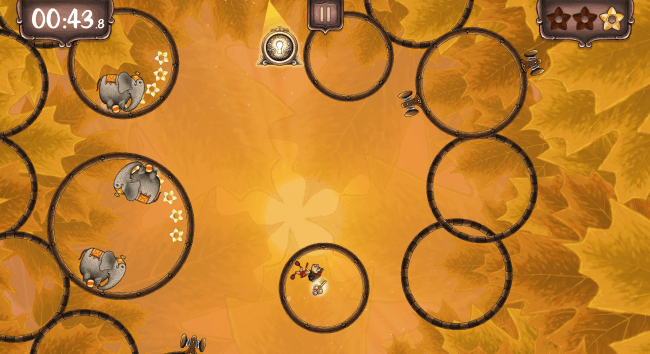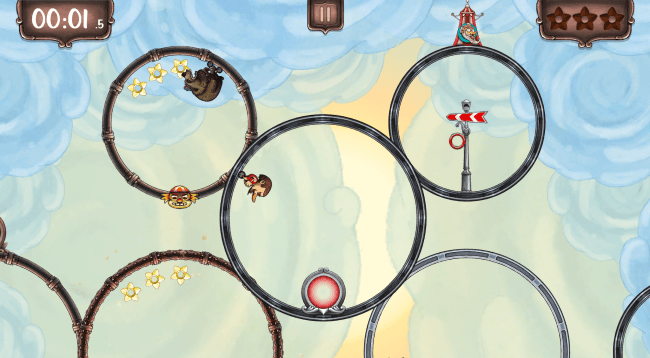- Wondering how to get Monopoly GO! free rolls? Well, you’ve come to the right place. In this guide, we provide you with a bunch of tips and tricks to get some free rolls for the hit new mobile game. We’ll …
Best Roblox Horror Games to Play Right Now – Updated Weekly
By Adele Wilson
Our Best Roblox Horror Games guide features the scariest and most creative experiences to play right now on the platform!The BEST Roblox Games of The Week – Games You Need To Play!
By Sho Roberts
Our feature shares our pick for the Best Roblox Games of the week! With our feature, we guarantee you'll find something new to play!Type Soul Clan Rarity Guide – All Legendary And Common Clans Listed!
By Nathan Ball
Wondering what your odds of rolling a particular Clan are? Wonder no more, with my handy Type Soul Clan Rarity guide.
Ring Run Circus Review
In the gravity-defying world of Ring Run Circus, motion and precision are key. Performers Nina, Ned, and Nelson have perfected the art of wheeling along their circus’s myriad of interconnected rings, performing acrobatic stunts to wow the crowds present only in the mind of big top dreamer Ringo. Ringo’s ideal circus takes place high above the ground on dozens of metallic circles, and it’s the player’s job to maneuver his star performers along these rings to the exit gate that marks the end of each standalone show and stage.
Our three acrobats share the ability to roll around the stage and switch between rings by simply tapping at their intersections. However, each character also boasts a personal skill that allows them to perform a talent unique to them alone: Nina can jump over obstacles, Ned can slap other characters that get in his way, and Nelson can activate switches by tugging them with his cane. While every level demands the same goal—collect the key located somewhere in the stage and use it to exit the gate—the challenges and design of the stage will differ depending on the character being featured. Nina is pitted against bouncy blockages, Ned’s levels are filled with circus lions and strong men that will knock him down if not smacked first, and Nelson’s stages are more puzzle-like, requiring levers to be pulled in order and rings moved to open paths to the key and gate.
The stages are separated into four worlds, with each performer soloing a series of 13 levels and sharing the stage in the final set, which features changing stations that allow players to swap between characters when needed. In order to move on to the next world and performer, you’ll need to collect at least 16 flowers total for a given character; flower pieces are scattered about each stage in tricky-to-reach places, with three complete flowers available per level. A fourth flower is attained by perfecting the level within a specific time, but strangely, this flower does not count toward the required total and acts merely as a personal challenge gauge.

Cirque du Circle
In the gravity-defying world of Ring Run Circus, motion and precision are key. Performers Nina, Ned, and Nelson have perfected the art of wheeling along their circus’s myriad of interconnected rings, performing acrobatic stunts to wow the crowds present only in the mind of big top dreamer Ringo. Ringo’s ideal circus takes place high above the ground on dozens of metallic circles, and it’s the player’s job to maneuver his star performers along these rings to the exit gate that marks the end of each standalone show and stage.
Our three acrobats share the ability to roll around the stage and switch between rings by simply tapping at their intersections. However, each character also boasts a personal skill that allows them to perform a talent unique to them alone: Nina can jump over obstacles, Ned can slap other characters that get in his way, and Nelson can activate switches by tugging them with his cane. While every level demands the same goal—collect the key located somewhere in the stage and use it to exit the gate—the challenges and design of the stage will differ depending on the character being featured. Nina is pitted against bouncy blockages, Ned’s levels are filled with circus lions and strong men that will knock him down if not smacked first, and Nelson’s stages are more puzzle-like, requiring levers to be pulled in order and rings moved to open paths to the key and gate.
The stages are separated into four worlds, with each performer soloing a series of 13 levels and sharing the stage in the final set, which features changing stations that allow players to swap between characters when needed. In order to move on to the next world and performer, you’ll need to collect at least 16 flowers total for a given character; flower pieces are scattered about each stage in tricky-to-reach places, with three complete flowers available per level. A fourth flower is attained by perfecting the level within a specific time, but strangely, this flower does not count toward the required total and acts merely as a personal challenge gauge.
Even without this bonus flower, though, collecting the 16 necessary to proceed is a reasonable task, and the stage skip button ensures you won’t be stuck on a single level indefinitely. This is a much-appreciated inclusion, as many of Ring Run Circus‘s stages are dizzyingly difficult. While some levels require simply dodging stationary obstacles to reach the exit, others demand precise timing of your movements to avoid flaming rings, teleporting magicians, high-speed motorcycle riders, and more. Almost everything in Ring Run Circus is out to get you, and being hit by anything—save the magicians—will knock your performer down and cause them to lose any collected flowers and the key. Often, you’ll have only a split second to make a move that will avoid one of these dangers, and if your timing is off even remotely, you’re sent back to square one.
This challenge in and of itself isn’t necessarily a deterrent; it makes levels you manage to four-flower that much more rewarding. However, this focus on precision collides with Ring Run Circus‘s core gameplay, which places you only partially in control of your character. You determine whether they skate on the inside or outside of a ring, when they switch rings, and when they use their special abilities, but otherwise your performers roll forward on their own, constantly moving without pause. You can evoke a speed boost by switching rings with proper timing, but this boost only lasts as long as you continue transitioning between rings, and otherwise, you have little power over your character’s movement or location. This results in many instances of merely watching your character loop-de-loop while waiting for the perfect moment to switch to the next ring.
This issue would be less noticeable if characters could reverse direction freely—at present, you have to find a set of figure eight rings or bouncer to do so—or if they merely traveled faster. At non-boost speeds, average-sized rings take a full three seconds to traverse, and larger rings take five seconds or more. On a simple run when you hit all your junctions on the first pass, these times may not come into play. But once you’re waiting for flames to die down or a moving ring to be accessible in the brief window you have for switching, the time spent not playing—just waiting—adds up.
When the timing is on and you’re able to effectively progress across a stage, though, Ring Run Circus is a joy to play. It’s at its best on fast-paced levels that utilize speed boosts to send our performers zipping around the rings like true “ringformer” acrobats. Knocking a bear unconscious or jumping over a toothy monkey is always surprisingly satisfying. With more control over the characters, Ring Run Circus could claim the title of ringmaster; for now, it’s just a really good show.

The good

The bad
More articles...
Monopoly GO! Free Rolls – Links For Free Dice
By Glen Fox
Wondering how to get Monopoly GO! free rolls? Well, you’ve come to the right place. In this guide, we provide you with a bunch of tips and tricks to get some free rolls for the hit new mobile game. We’ll …Best Roblox Horror Games to Play Right Now – Updated Weekly
By Adele Wilson
Our Best Roblox Horror Games guide features the scariest and most creative experiences to play right now on the platform!The BEST Roblox Games of The Week – Games You Need To Play!
By Sho Roberts
Our feature shares our pick for the Best Roblox Games of the week! With our feature, we guarantee you'll find something new to play!Type Soul Clan Rarity Guide – All Legendary And Common Clans Listed!
By Nathan Ball
Wondering what your odds of rolling a particular Clan are? Wonder no more, with my handy Type Soul Clan Rarity guide.








 “
“